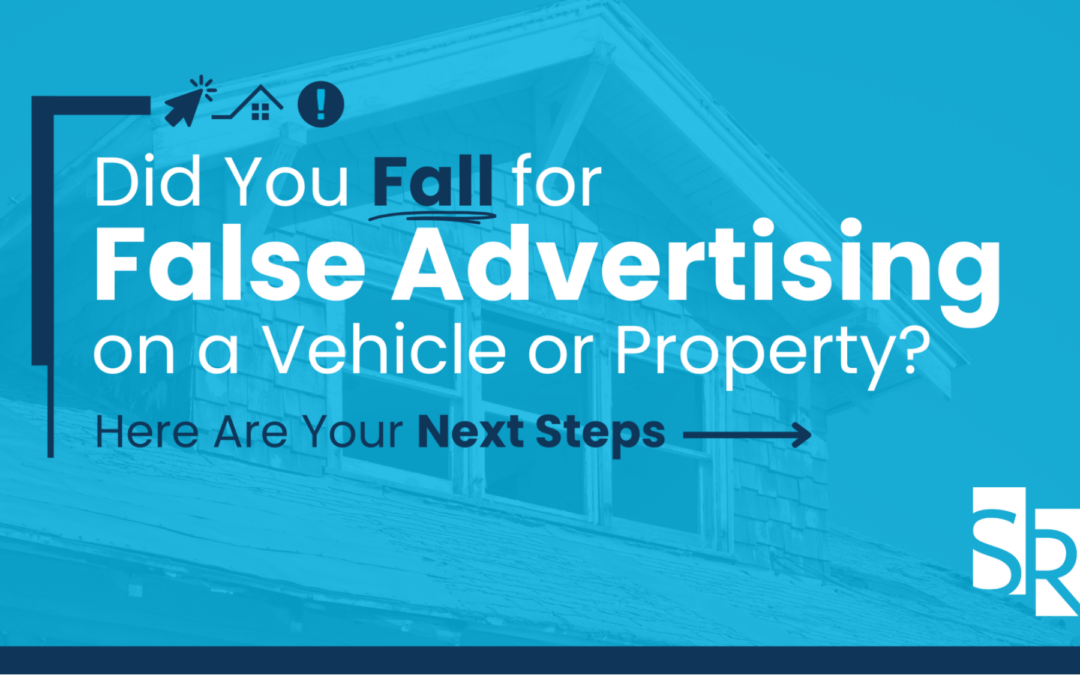In the United States, there are laws, both federally and statewide, that prohibit false advertising from sellers and businesses. However, this does not stop them from doing it, and it can lead to many consumers purchasing a vehicle or property under false pretenses. With such a significant and expensive purchase, no one wants to learn that the dream car or home they just bought is actually a wreck waiting to happen.
So, if you were lured into a purchase under false advertising, here is what you need to do next.
What Is Considered False Advertising?
False advertising entails a business wrongly labeling and claiming “facts” about their products. However, false advertising can also be what is not said about the product. For example, this could include sellers who claim that a car has no wreckage history, has X amount of miles when it actually is double that, or that a property is clean of any issues when it needs significant upgrades. False advertising gives consumers misleading information in order to purchase a product, leading them to pay more than it is worth or to purchase it in the first place.
The Different Types of False Advertising
The very basic forms of false advertising are when companies use words such as “light,” “organic,” or “natural” when the product is not. Regarding vehicles or housing, you might find false advertising in misleading photographs, modifications, or quality. However, there are four distinct types of false advertising to be aware of.
The Bait and Switch
This form of false advertising involves a seller advertising one product or sale to get people interested and then completely changing the sale or product when the purchase is made.
Hidden Fees
When buying a vehicle or house, you have a good idea of what fees to expect, but if you suddenly see your total a couple of grand higher than expected, you might have been hit with hidden fees.
Deceptive Quantities
Businesses might place products in larger containers to trick consumers into thinking they are getting more than they are. You might see this more often in food products.
Misleading Labels
If businesses use words that do not accurately represent their product, this could be considered misleading advertising. This means using words like “recyclable” when it is not or saying a vehicle only has 10,000 miles when it actually has 100,000.
Collect All Your Evidence
It is crucial to remember that if you are going to file for false advertising, you must be able to prove it. Collecting all the evidence to back your claim is essential. First, you must prove that you initially purchased the vehicle or property. From there, you must have evidence to prove that the advertisement was false or misleading, that the company lied about something important, that you saw the false advertisement, and that you relied on that false advertising to make your purchase. Then, you must show that you suffered financial harm from the purchase.
Remember That You Are Protected
If you were wronged by false advertising, you have the right to sue the company you purchased from. You are protected as a consumer nationally by the Federal Trade Commission and under Missouri Law by the Missouri Merchandising Practices Act (MMPA). Both require the collected evidence on your claim, and both will ensure you are rightly protected as a consumer.
Find a Consumer Lawyer
Before proceeding with large claims and threatening to sue, it is wise to contact a consumer lawyer to ensure you have all your ducks in a row and that your voice is heard once you take that first step. A consumer lawyer can help you gather the proper evidence and take the right steps to file your claim and sue. It is best to do this alongside the experts.
So, if you have fallen for false advertising and want to take the next steps, contact the team at Stecklein Robertson Law today.
